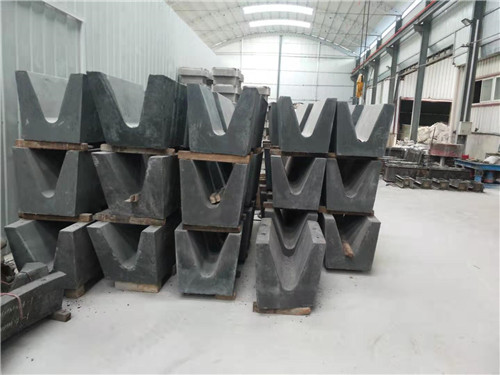With the continuous update and improvement of cement production technology, the single cement kiln production line is developing towards a larger scale. The new dry cement production technology has the characteristics of high kiln temperature, fast kiln speed, complex system structure, and severe erosion of volatile components such as alkalis, which has posed more demanding requirements for refractory materials used in cement kilns.
Due to their excellent performance, easy construction, and energy saving advantages, unshaped refractory materials have been widely used in the cement industry, accounting for nearly 50% of the total. However, unshaped refractory materials require higher on-site construction quality and are prone to problems such as excessive water addition, rapid decline in casting performance, and cracking during the baking process.
Refractory precast components are a new direction for the construction and application technology progress of unshaped refractory materials, with their preparation process between shaped and unshaped refractory materials. Refractory precast components have the advantages of both shaped and unshaped materials in terms of performance. In recent years, they have developed rapidly.
Refractory precast components divide the pre-constructed parts into small pieces in advance, design appropriate shapes, make molds according to the shapes, then cast and shape them in the factory, and transport them to the construction site after curing and baking. The application of refractory precast components has changed the traditional on-site casting construction method, making the construction simple and easy, eliminating the need for on-site mixing, pouring, or ramming, as well as the corresponding equipment.
This greatly saves construction time and makes the on-site construction conditions less affected by construction environment and season, which is more conducive to ensuring construction quality. To facilitate production, transportation, and installation, the shape of the precast components cannot be too large or too complex, and the size should be as uniform as possible. In addition, it is necessary to consider the combination of block-to-block to enhance the integration effect after construction. The construction site needs to be cleaned, otherwise it will affect the installation accuracy and effect of refractory precast components.
Most of the parts used for refractory precast components are in special environments such as high temperature, cement clinker scouring, wear, rapid cooling and heating, which are prone to mechanical deformation. They need to have good corrosion resistance, wear resistance, high-temperature gas scouring resistance, and excellent thermal shock stability to meet the performance requirements. In order to achieve the required performance, raw material proportioning is the foundation, which is similar to the requirements for casting materials.
However, casting materials need to focus on the performance throughout the temperature range from construction to use, while refractory precast components, as shaped products made of casting materials, only need to focus on the performance after baking. Many manufacturers have listed the performance indicators of precast components under different temperature conditions, but in fact, they are not very meaningful for cement manufacturers. In view of this situation, the raw materials and proportions used for refractory precast components can be adjusted based on casting materials, but more attention needs to be paid to the performance after baking.
During the construction process of key refractory materials in the cement kiln, higher construction quality is required. However, during the maintenance period of the cement kiln, the construction period is generally short, and it is difficult to guarantee the quality of on-site casting construction, which has a great impact on the service life of refractory materials. Increasing the water addition will increase the porosity of the casting material, reduce its strength, and seriously affect its wear resistance. Excessive water addition will also affect the drying speed and quality of the casting material, causing cracking and peeling. Therefore, improving the quality of on-site construction and reasonable selection of refractory.


